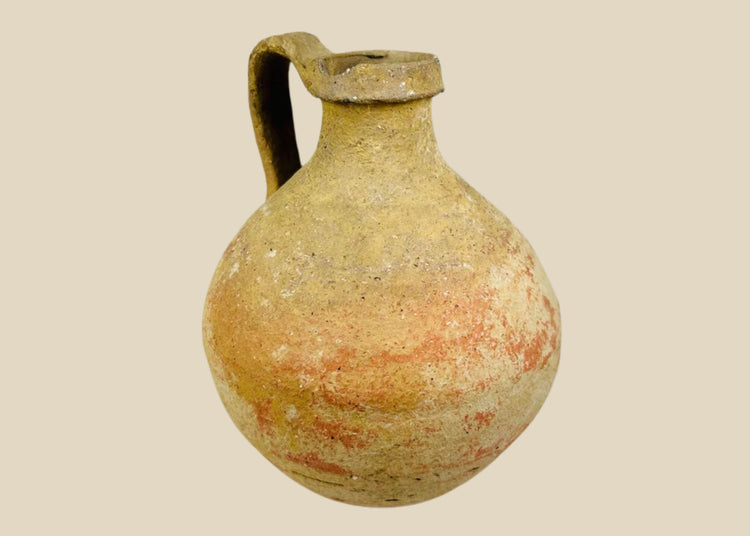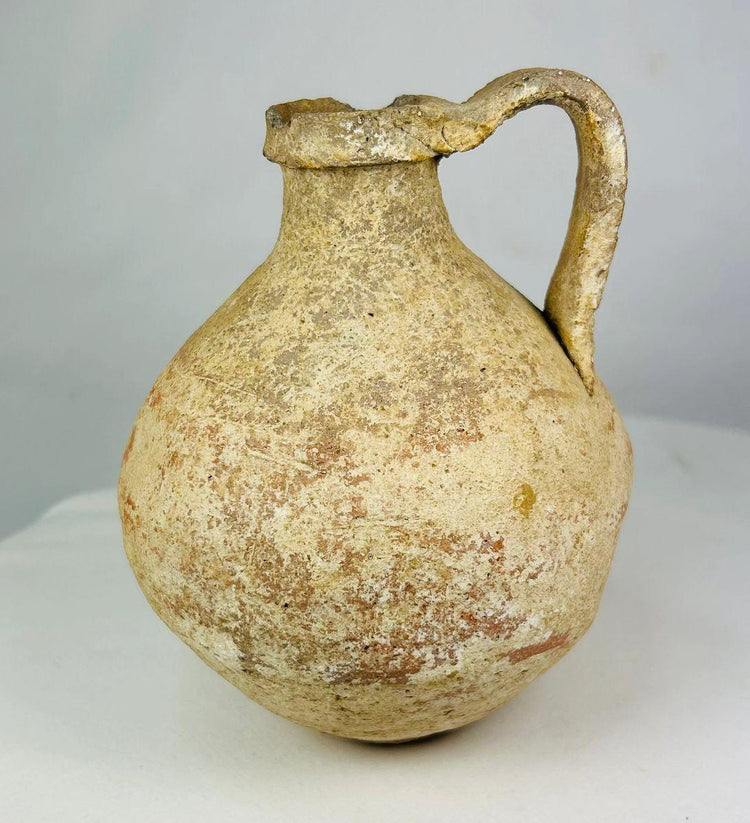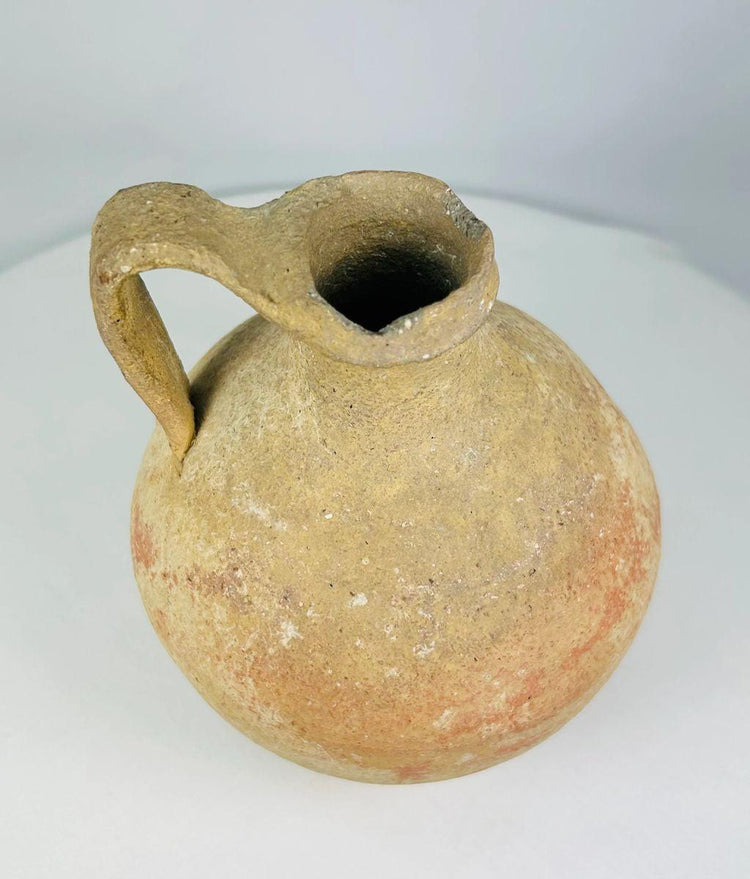Greco-Roman | Abydos Ware | Terracotta Jug | Circa 1st–3rd Century CE
Description
More
Less
Historical Context & Origin
Region: Eastern Mediterranean / Egypt (Abydos)
Material: Terracotta (earthenware)
Period: Greco-Roman Period, circa 1st Century BCE – 3rd Century CE
Description
This terracotta jug is a fine example of Abydos ware, a pottery tradition associated with the archaeological site of Abydos in Egypt. Crafted during the Greco-Roman period, it reflects both practical ingenuity and refined artistry. With a rounded body, spouted rim, and arched handle, the jug was designed for storing and pouring liquids such as wine, oil, or water—serving an essential role in both household and ritual contexts.
Features
- Robust rounded body with distinct pouring spout
- Gracefully arched handle for stability and function
- Subtle traces of red and brown pigment once enhancing its appearance
- Surface wear and rim chips consistent with long use and antiquity
- Natural earthen patina attesting to centuries of preservation
Cultural Significance
Terracotta vessels like this were integral to daily life in ancient Mediterranean societies, blending form and function with symbolic meaning. Abydos ware embodies the cultural fusion of Egyptian and Greco-Roman traditions, often used in domestic settings as well as ceremonial or burial contexts. This jug thus represents not only an everyday tool but also a link to the religious and cultural fabric of its time.
Condition
The vessel is remarkably intact, with only minor rim chips and surface abrasions consistent with its age. The patina and traces of pigment confirm its authenticity and historical value.
Dimensions (approximate)
Height: 9 in
Width: 6 in
Age
Circa 1st Century BCE – 3rd Century CE
Description
Historical Context & Origin
Region: Eastern Mediterranean / Egypt (Abydos)
Material: Terracotta (earthenware)
Period: Greco-Roman Period, circa 1st Century BCE – 3rd Century CE
Description
This terracotta jug is a fine example of Abydos ware, a pottery tradition associated with the archaeological site of Abydos in Egypt. Crafted during the Greco-Roman period, it reflects both practical ingenuity and refined artistry. With a rounded body, spouted rim, and arched handle, the jug was designed for storing and pouring liquids such as wine, oil, or water—serving an essential role in both household and ritual contexts.
Features
- Robust rounded body with distinct pouring spout
- Gracefully arched handle for stability and function
- Subtle traces of red and brown pigment once enhancing its appearance
- Surface wear and rim chips consistent with long use and antiquity
- Natural earthen patina attesting to centuries of preservation
Cultural Significance
Terracotta vessels like this were integral to daily life in ancient Mediterranean societies, blending form and function with symbolic meaning. Abydos ware embodies the cultural fusion of Egyptian and Greco-Roman traditions, often used in domestic settings as well as ceremonial or burial contexts. This jug thus represents not only an everyday tool but also a link to the religious and cultural fabric of its time.
Condition
The vessel is remarkably intact, with only minor rim chips and surface abrasions consistent with its age. The patina and traces of pigment confirm its authenticity and historical value.
Dimensions (approximate)
Height: 9 in
Width: 6 in
Age
Circa 1st Century BCE – 3rd Century CE
You May Also Like























